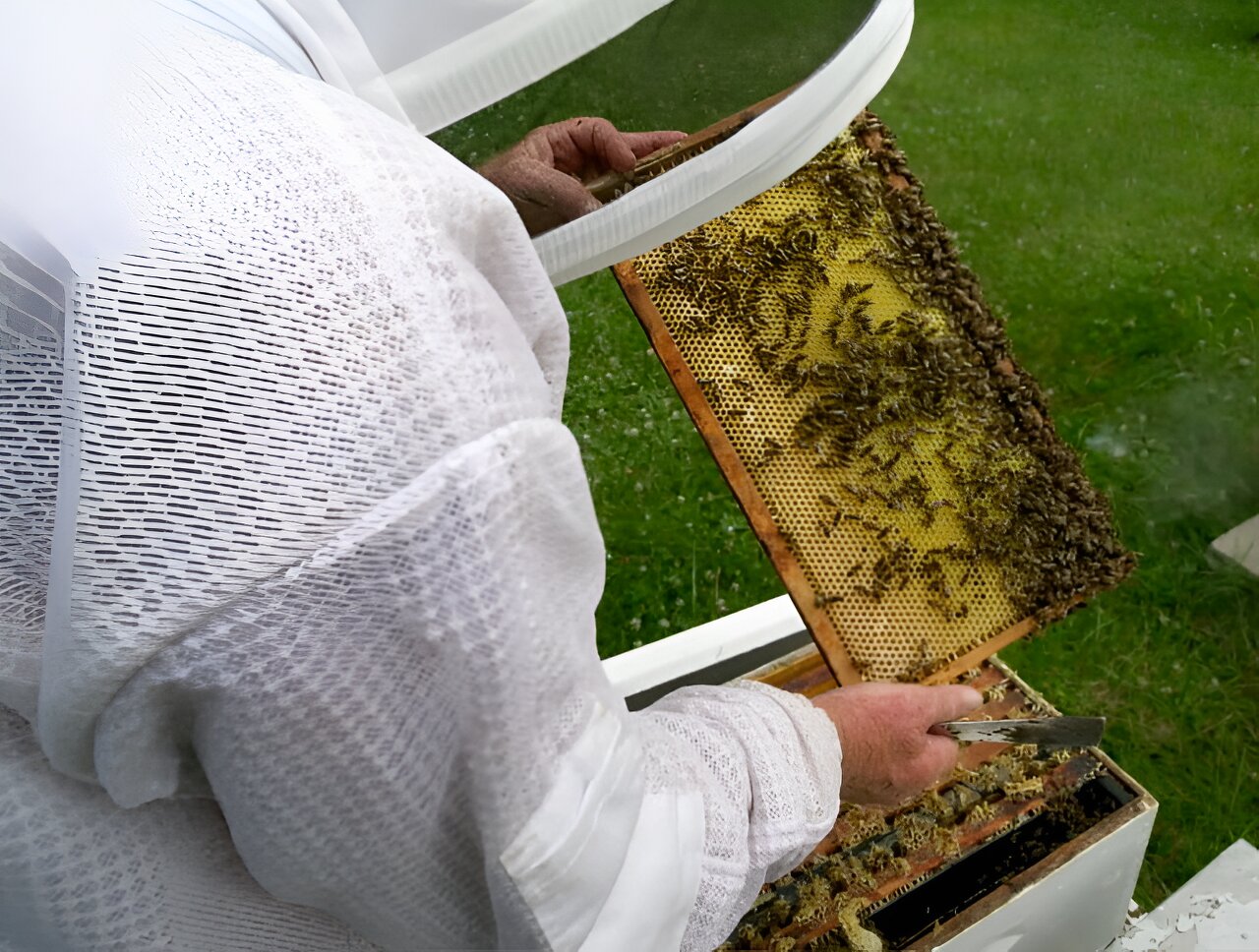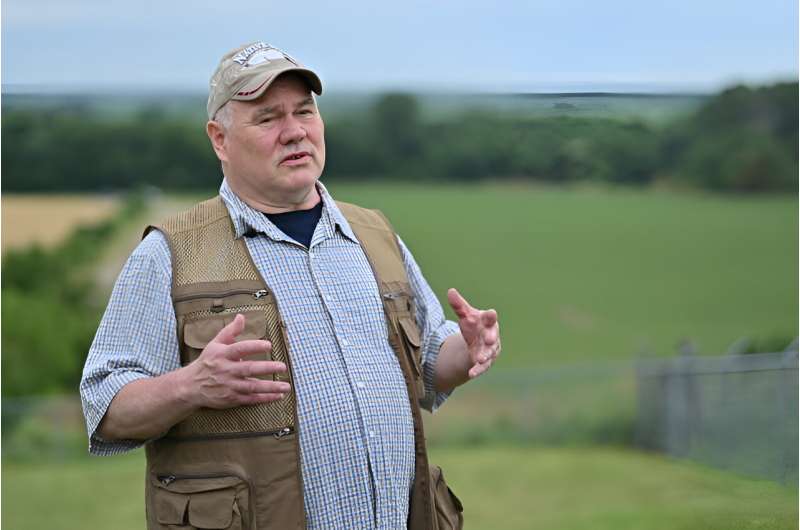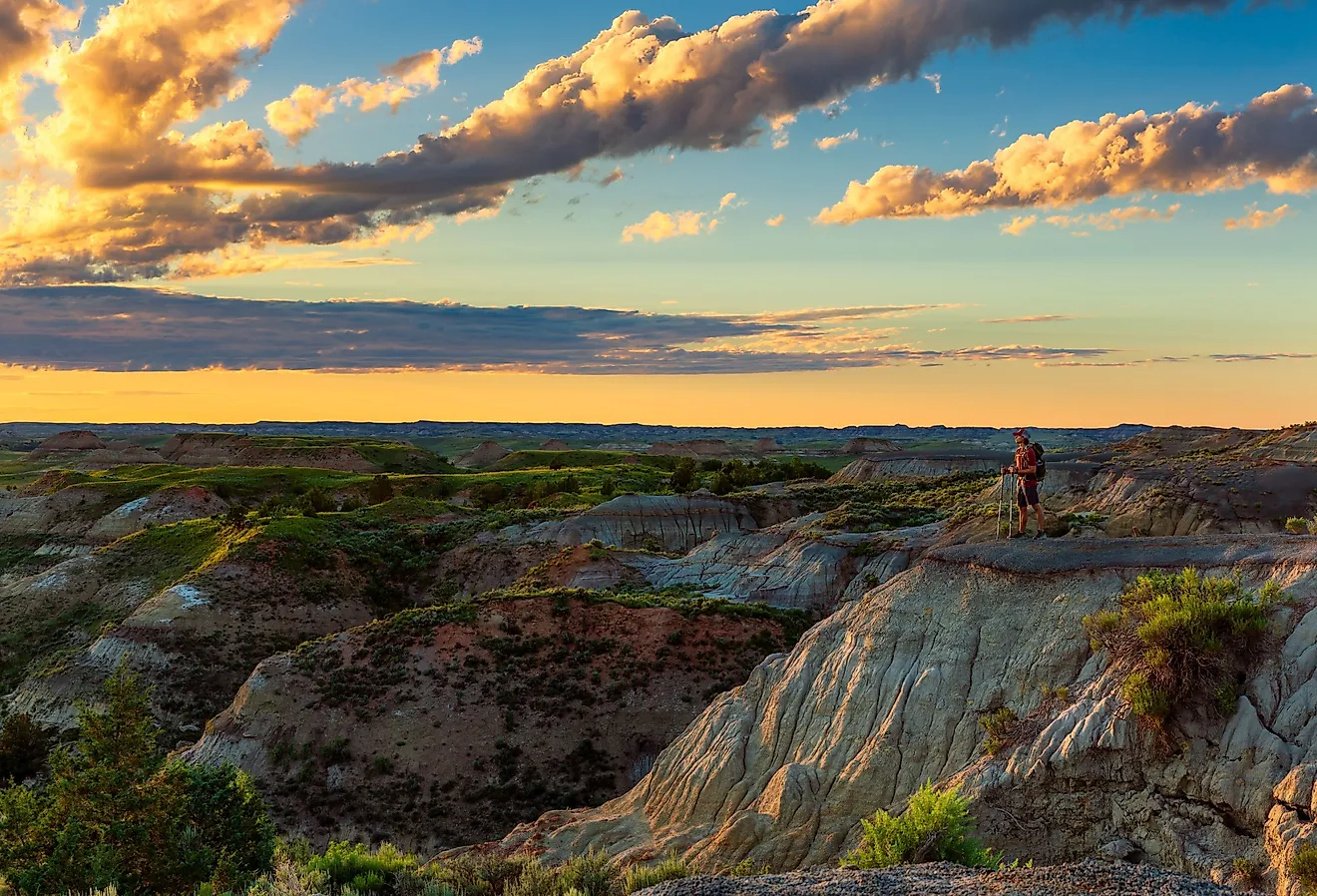The Kansas City Chiefs are the NFL’s newest dynasty after securing back-to-back Super Bowl championships in 2022 and 2023.
Few teams in league history have found the kind of sustained success that Kansas City has attained in recent seasons, and the Chiefs’ utter dominance can be attributed to their ability to identify and acquire talent through the draft.
This year, Kansas City will have the No. 32 selection in the first round of the 2024 NFL Draft, a spot that the Chiefs have grown accustomed to occupying. Last time they held the last pick in Round 1, Kansas City chose running back Clyde Edwards-Helaire, who helped carry the load for the Chiefs offense through two of their three Super Bowl wins in the Patrick Mahomes era.
Check out every other player selected by Kansas City in the first round of the NFL draft throughout Chiefs history below to see what kind of company the team’s 2024 pick will find themselves in:
Nov 23, 1967; Kansas City, MO, USA; FILE PHOTO; Oakland Raiders quarterback George Blanda (16) looks to throw as Kansas City Chiefs defensive end Gene Trosch (74) at Municipal Stadium.Oakland defeated Kansas City 44-22. Mandatory Credit: Malcolm Emmons-USA TODAY Sports

Jan 11,1970; New Orleans, LA, USA; FILE PHOTO; Kansas City Chiefs guard Mo Moorman (76) block for quarterback Len Dawson (16) against the Minnesota Vikings in Super Bowl IV at Tulane Stadium. The Chiefs defeated the Vikings 23-7. Mandatory Credit: Malcolm Emmons- USA TODAY Sports

Unknown date and location; USA; FILE PHOTO; Kansas City Chiefs running back Ed Podolak (14) carries the ball with offensive guard George Daney (60) against San Diego Chargers defensive end Tom Williams (87). Mandatory Credit: Rod Hanna-USA TODAY Sports

Nov 1, 1970; Kansas City, MO, USA; FILE PHOTO; Oakland Raiders receiver Fred Biletnikokf catches a pass defended by Kansas City Chiefs defensive back Jim Marsalis (40) at Municipal Stadium. The teams played to a 17-17 tie. Mandatory Credit: Rod Hanna-USA TODAY Sports

Jan 30, 2022; Kansas City, Missouri, USA; A general view of a Kansas City Chiefs helmet against the Cincinnati Bengals before the AFC Championship game at GEHA Field at Arrowhead Stadium. Mandatory Credit: Denny Medley-USA TODAY Sports

Dec. 25, 1971; Kansas City, MO, USA; FILE PHOTO; Kansas City Chiefs receiver Elmo Wright (17) does a dance after scoring on a play that was nullified against the Miami Dolphins at Municipal Stadium during the 1971 AFC Divisional Playoff game. Miami won 27-24 in two overtime periods in the longest game ever played in the NFL. Mandatory Credit: Rod Hanna-USA TODAY Sports

Jan 1, 1972; Miami, FL, USA; FILE PHOTO; Nebraska Cornhuskers running back Jeff Kinney (35) takes a handoff from quarterback Jerry Tagge (14) during the 1972 Orange Bowl game. Nebraska defeated Alabama 38-6. Mandatory Credit: Malcolm Emmons-USA TODAY Sports

Sep 20, 2009; Kansas City, MO, USA; Kansas City Chiefs helmet on the field during the game against the Oakland Raiders at Arrowhead Stadium. Mandatory Credit: Kirby Lee/Image of Sport-USA TODAY Sports

Dec 1, 1974; St. Louis, MO, USA; FILE PHOTO; St. Louis Cardinals defensive tackle Bob Rowe (75) in action against Kansas City Chiefs running back Woody Green (27) and quarterback Len Dawson (16) at Busch Stadium. Mandatory Credit Herb Weitman-USA TODAY Sports

Dec 8, 2013; Landover, MD, USA; General view of Kansas City Chiefs helmet before the game against the Washington Redskins at FedEx Field. Mandatory Credit: Brad Mills-USA TODAY Sports

Aug 17, 2014; Charlotte, NC, USA; Kansas City Chiefs helmets lay on the sidelines during the game against the Carolina Panthers at Bank of America Stadium. Mandatory Credit: Jeremy Brevard-USA TODAY Sports

Aug 28, 2014; Green Bay, WI, USA; A Kansas City Chiefs helmet sits on the sidelines during the game against the Green Bay Packers at Lambeau Field. Mandatory Credit: Jeff Hanisch-USA TODAY Sports

KANSAS CITY, MO – May 13: The helmet of Matt Szymanski #14 of the Kansas City Chiefs lays on the field during the Kansas City Chiefs Minicamp on May 13, 2012 at the Chiefs Training Facility in Kansas City, Missouri. (Photo by Kyle Rivas/Getty Images)

Aug 10, 1991; St. Louis, MO, USA; FILE PHOTO; Kansas City Chiefs defensive end Mike Bell (99) on the sideline against the New York Jets at Busch Stadium during the 1991 preseason. Mandatory Credit: Herb Weitman-USA TODAY NETWORK

Oct 7, 1979; Cincinnati, OH, USA; FILE PHOTO; Kansas City Chiefs quarterback Steve Fuller (4) in action against the Cincinnati Bengals at Riverfront Stadium. Mandatory Credit: Malcolm Emmons-USA TODAY NETWORK

KANSAS CITY, MO – APRIL 28: Brad Budde (L) and his father, Ed Budde, both former players with the Kansas City Chiefs, walk onto the stage during the second round of the 2023 NFL Draft at Union Station on April 28, 2023 in Kansas City, Missouri. (Photo by David Eulitt/Getty Images)

KANSAS CITY, MO – OCTOBER 24: Detail of a Kansas City Chiefs helmet during the game against the Atlanta Falcons on October 24, 2004 at Arrowhead Stadium in Kansas City, Missouri. The Chiefs defeated the Falcons 56-10. (Photo by Brian Bahr/Getty Images)

Tennessee receiver Anthony Hancock celebrates his 47-yard touchdown catch from quarterback Steve Alatorre. Tennessee struggled in defeating Georgia Tech 23-10 before 50,127 at Grant Field in Atlanta Oct. 11, 1980.

TUSCALOOSA – OCTOBER 17: ESPN TV analyst Todd Blackledge walks on the field before the game between the South Carolina Gamecocks and the Alabama Crimson Tide at Bryant-Denny Stadium in Tuscaloosa, Alabama on October 17, 2009. The Crimson Tide beat the Gamecocks 20-6. (Photo by Mike Zarrilli/Getty Images)

Aug 10, 1991; St. Louis, MO, USA; FILE PHOTO; New York Jets offensive linemen Jeff Criswell (69) and Mike Haight (79) in action against Kanas City Chiefs defensive end Bill Maas (63) at Busch Stadium during the 1991 preseason. Mandatory Credit: Herb Weitman-USA TODAY NETWORK

Sep 5, 1993; Tampa, FL, USA; FILE PHOTO; Kansas City Chiefs tackle John Alt (76) against the Tampa Bay Buccaneers at Tampa Stadium. Mandatory Credit: USA TODAY Sports

Nov 17, 1991; Los Angeles, CA, USA: FILE PHOTO; Los Angeles Raiders tight end Ethan Horton (88) in action against Seattle Seahawks defensive back Brian Davis (34) at Los Angeles Memorial Coliseum. Mandatory Credit: Long Photography-USA TODAY NETWORK

KANSAS CITY – DECEMBER 2: A view of a Kansas City Cheifs helmet that displays Sean Taylors #21 on it during the NFL game against the San Diego Chargers at Arrowhead Stadium on December 2, 2007 in Kansas City, Missouri. (Photo by Jamie Squire/Getty Images)

Aug 19, 2017; Cincinnati, OH, USA; A Kansas City Chiefs helmet sits on the bench during a game against the Cincinnati Bengals at Paul Brown Stadium. Mandatory Credit: David Kohl-USA TODAY Sports

8 Sep 1996: Defensive lineman Neil Smith of the Kansas City Chiefs in action during the Chiefs 19-3 victory over the Oakland Raiders at Arrowhead Stadium in Kansas City, Missouri. Mandatory Credit: Stephen Dunn /Allsport

14 Dec 1997: Outside lineback Derrick Thomas #58 of the Kansas City Chiefs celebrates during a game against the San Diego Chargers at the Qualcomm Stadium in San Diego, California. The Chiefs defeated the Chargers 29-7. Mandatory Credit: Jed Jacobsohn /

Percy Snow #48, Linebacker for the Michigan State Spartans during the NCAA Big Ten Conference college football game against the University of Miami Hurricanes on 30th September 1989 at the Spartan Stadium in East Lansing, Michigan, United States. The Miami Hurricanes won the game 26 – 20. (Photo by Brian Masck/Allsport/Getty Images)

Sep 5, 1993; Tampa, FL, USA; FILE PHOTO; Kansas City Chiefs full back Kimble Anders (38) and Harvey Williams (44) in action against the Tampa Bay Buccaneers at Tampa Stadium. Mandatory Credit: Manny Rubio-USA TODAY NETWORK

Feb 1, 1998; Honolulu, HI, USA; FILE PHOTO; AFC running back Dale Carter (34) of the Kansas City Chiefs on the field against the NFC during 1998 Pro Bowl at Aloha Stadium. Mandatory Credit: VJ Lovero-USA TODAY NETWORK

85. Matt Herkenhoff, OT, 1976-1985: Herkenhoff was selected by the Chiefs in the fourth round of the 1974 NFL Draft, but he initially opted to play in the rival World Football League. After the WFL folded, he signed with the Chiefs and started 122 games for them during his 10-season NFL career. He was a staple at left tackle from the mid-1970s to the mid-1980s. He was known as an adaptable and dependable player that ultimately outplayed his draft position. (Photo by Denny Medley-USA TODAY Sports)

PONTIAC, : Detroit Lions from left Gus Frerotte (L), Greg Hill, Johnnie Morton and Robert Porcher get to sample FOX TV’s Jon Madden’s surgically altered turkey after their game against the Chicago Bears 25 November 1999 in Pontiac, Michigan. The Lions beat the Bears 21-17. AFP PHOTO/Jeff KOWALSKY (Photo credit should read JEFF KOWALSKY/AFP/Getty Images)

Dec 29, 2019; Kansas City, Missouri, USA; A general view of a Kansas City Chiefs helmet during the game against the Los Angeles Chargers at Arrowhead Stadium. Mandatory Credit: Denny Medley-USA TODAY Sports

97. Jerome Woods, S, 1996-2005: A fixture of the Chiefs secondary for the better part of 10 seasons, Woods was a fiery competitor. He knew how to lay the wood, recording five consecutive seasons with over 75 total tackles from 1997 to 2001. His solo tackle numbers rank No. 11 in Chiefs history. (Photo by Jamie Squire / Getty Images)

KANSAS CITY, MO – OCTOBER 31: Tight end Tony Gonzalez #88 of the Kansas City Chiefs celebrates after scoring his second touchdown of the game in the fourth quarter against the Indianapolis Colts on October 31, 2004 at Arrowhead Stadium in Kansas City, Missouri. The Chiefs defeated the Colts 45-35. (Photo by Jeff Gross/Getty Images)

30 Sep 2001: Dorian Boose #72 of the Washington Redskins goes head to head against Victor Rilet #66 of the Kansas City Chiefs during the game at the FedEx Field in Landover Maryland. The Chiefs defeated the Redskins 45-13.Mandatory Credit: Doug Pensinger /Allsport

KANSAS CITY, MO – SEPTEMBER 15: Tackle John Tait of the Kansas City Chiefs looks at the scoreboard as the Jacksonville Jaguars run out the clock in the fourth quarter on September 15, 2002, at Arrowhead Stadium in Kansas City, Missouri. The Jaguars defeated the Chiefs 23-16. (Photo by Brian Bahr/Getty Images)

24 Sep 2000: Sylvester Morris #84 of the Kansas City Chiefs goes head-to-head against Terrell Buckley #27 of the Denver Broncos during the game at the Mile High Stadium in Denver, Colorado. The Chiefs defeated the Broncos 24-22.Mandatory Credit: Brian Bahr /Allsport

Nov 15, 2009; Oakland, CA, USA; A Dallas Texans helmet at the AFC legacy game between the Kansas City Chiefs and the Oakland Raiders at the Oakland-Alameda County Coliseum. Mandatory Credit: Kirby Lee/Image of Sport-USA TODAY Sports

Oct 1, 2006; Kansas City, MO, USA; Kansas City Chiefs defensive tackle (90) Ryan Sims pressures San Francisco 49ers quarterback (11) Alex Smith in the second half at Arrowhead Stadium in Kansas City, MO. The Chiefs won the game 41-0. Mandatory Credit: John Rieger-USA TODAY Sports Copyright (c) 2006 John Rieger

Nov 23, 2006; Kansas City, MO, USA; Kansas City Chiefs running back (27) Larry Johnson is tackled by Denver Broncos cornerback (24) Champ Bailey in the second half at Arrowhead Stadium in Kansas City, MO. Kansas City won 19-10. Mandatory Credit: John Rieger-USA TODAY Sports Copyright (c) 2006 John Rieger

1972; Unknown location, USA; FILE PHOTO; Detail of Kansas City Chiefs cleats and helmets on the sideline. Mandatory Credit: Manny Rubio-USA TODAY Sports

Jan 6, 2018; Kansas City, MO, USA; Kansas City Chiefs inside linebacker Derrick Johnson (56) enters the field during player introductions before the game against the Tennessee Titans in the AFC Wild Card playoff football game at Arrowhead stadium. Mandatory Credit: Denny Medley-USA TODAY Sports

Nov 15, 2015; Denver, CO, USA; Denver Broncos quarterback Peyton Manning (18) runs out of the pocket under pressure from Kansas City Chiefs outside linebacker Tamba Hali (91) during the first half at Sports Authority Field at Mile High. Mandatory Credit: Chris Humphreys-USA TODAY Sports

November 12, 2012; Pittsburgh , PA, USA; Kansas City Chiefs wide receiver Dwayne Bowe (82) runs the ball after a catch against the Pittsburgh Steelers during the second half of the game at Heinz Field. The Steelers won the game, 16-13, in overtime. Mandatory Credit: Jason Bridge-USA TODAY Sports

Oct 17, 2010; Houston, TX, USA; Kansas City Chiefs defensive end Glenn Dorsey (72) in action against the Houston Texans in the first quarter at Reliant Stadium. Mandatory Credit: Brett Davis-USA TODAY Sports

KANSAS CITY, MO – NOVEMBER 13: Offensive tackle Branden Albert #76 of the Kansas City Chiefs blocks linebacker Von Miller #58 of the Denver Broncos during the first half on November 13, 2011 at Arrowhead Stadium in Kansas City, Missouri. Denver defeated Kansas City 17-10. (Photo by Peter Aiken/Getty Images)

Dec 22, 2013; Kansas City, MO, USA; Kansas City Chiefs defensive end Tyson Jackson (94) celebrates after a tackle in the first half against the Indianapolis Colts at Arrowhead Stadium. The Colts won 23-7. Mandatory Credit: Denny Medley-USA TODAY Sports

KANSAS CITY, MO – JANUARY 09: Safety Eric Berry #29 of the Kansas City Chiefs celebrates after breaking up a pass to tight end Todd Heap #86 of the Baltimore Ravens in the endzone during their 2011 AFC wild card playoff game at Arrowhead Stadium on January 9, 2011 in Kansas City, Missouri. (Photo by Doug Pensinger/Getty Images)

KANSAS CITY, MO – OCTOBER 07: Jon Baldwin #89 of the Kansas City Chiefs flips over after having a pass knocked away by Jimmy Smith #22 of the Baltimore Ravens early in the fourth quarter on October 07, 2012 at Arrowhead Stadium in Kansas City, Missouri. (Photo by Kyle Rivas/Getty Images)

KANSAS CITY, MO – OCTOBER 07: Dontari Poe #92 of the Kansas City Chiefs celebrates after breaking up a play against the Baltimore Ravens offense in the fourth quarter on October 07, 2012 at Arrowhead Stadium in Kansas City, Missouri. (Photo by Kyle Rivas/Getty Images)

KANSAS CITY, MISSOURI – JANUARY 12: Eric Fisher #72 of the Kansas City Chiefs celebrates the 51-31 win over the Houston Texans in the AFC Divisional playoff game Arrowhead Stadium on January 12, 2020 in Kansas City, Missouri. (Photo by Peter Aiken/Getty Images)

KANSAS CITY, MO – NOVEMBER 11: Dee Ford #55 of the Kansas City Chiefs begins to rush the passer during the second half of the game against the Arizona Cardinals at Arrowhead Stadium on November 11, 2018 in Kansas City, Missouri. (Photo by Jamie Squire/Getty Images)

KANSAS CITY, MP – JANUARY 15: Cornerback Marcus Peters #22 of the Kansas City Chiefs checks his aligment with an official prior turnover a play against the Pittsburgh Steelers during the first quarter of the game in the AFC Divisional Playoff game at Arrowhead Stadium on January 15, 2017 in Kansas City, Missouri. (Photo by Jamie Squire/Getty Images)

Dec 5, 2021; Kansas City, Missouri, USA; A general view of a Kansas City Chiefs helmet against the Denver Broncos before the game at GEHA Field at Arrowhead Stadium. Mandatory Credit: Denny Medley-USA TODAY Sports

Kansas City Chiefs quarterback Patrick Mahomes (15) celebrates after defeating the San Francisco 49ers in Super Bowl LVIII at Allegiant Stadium. Mandatory Credit: Mark J. Rebilas-USA TODAY Sports

Jan 24, 2021; Kansas City, Missouri, USA; A general view of a Kansas City Chiefs helmet before the AFC Championship Game against the Buffalo Bills at Arrowhead Stadium. Mandatory Credit: Jay Biggerstaff-USA TODAY Sports

MIAMI, FLORIDA – FEBRUARY 02: Details of Kansas City Chiefs helmet before Super Bowl LIV at Hard Rock Stadium on February 02, 2020 in Miami, Florida. (Photo by Maddie Meyer/Getty Images)

Nov 8, 2020; Kansas City, Missouri, USA; Kansas City Chiefs running back Clyde Edwards-Helaire (25) warms up before a game against the Carolina Panthers at Arrowhead Stadium. Mandatory Credit: Denny Medley-USA TODAY Sports

KANSAS CITY, MO – May 13: The helmet of Matt Szymanski #14 of the Kansas City Chiefs lays on the field during the Kansas City Chiefs Minicamp on May 13, 2012 at the Chiefs Training Facility in Kansas City, Missouri. (Photo by Kyle Rivas/Getty Images)

Feb 11, 2024; Paradise, Nevada, USA; Kansas City Chiefs cornerback Trent McDuffie (22) breaks up a pass intended for San Francisco 49ers wide receiver Deebo Samuel (19) in the first quarter in Super Bowl LVIII at Allegiant Stadium. Mandatory Credit: Stephen R. Sylvanie-USA TODAY Sports

KANSAS CITY, MISSOURI – DECEMBER 24: George Karlaftis #56 of the Kansas City Chiefs sacks Geno Smith #7 of the Seattle Seahawks during the second quarter at Arrowhead Stadium on December 24, 2022 in Kansas City, Missouri. (Photo by David Eulitt/Getty Images)

Sep 17, 2023; Jacksonville, Florida, USA; Jacksonville Jaguars quarterback Trevor Lawrence (16) runs with the ball chased by Kansas City Chiefs defensive end Felix Anudike-Uzomah (97) in the second quarter at EverBank Stadium. Mandatory Credit: Nathan Ray Seebeck-USA TODAY Sports

































